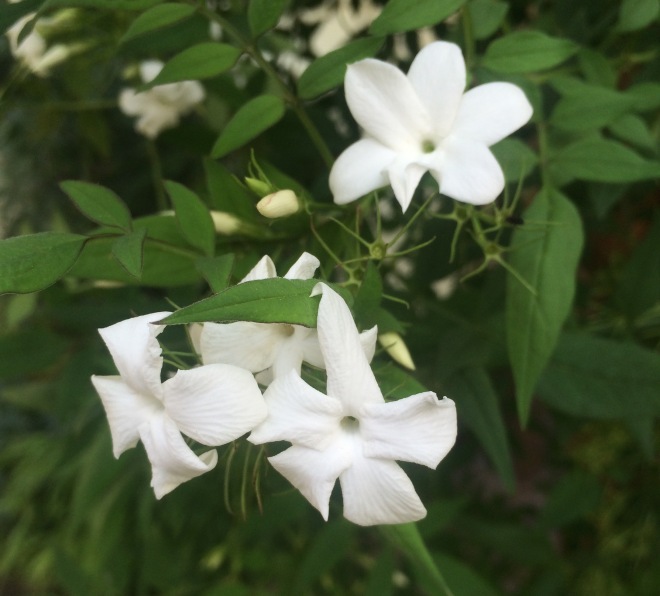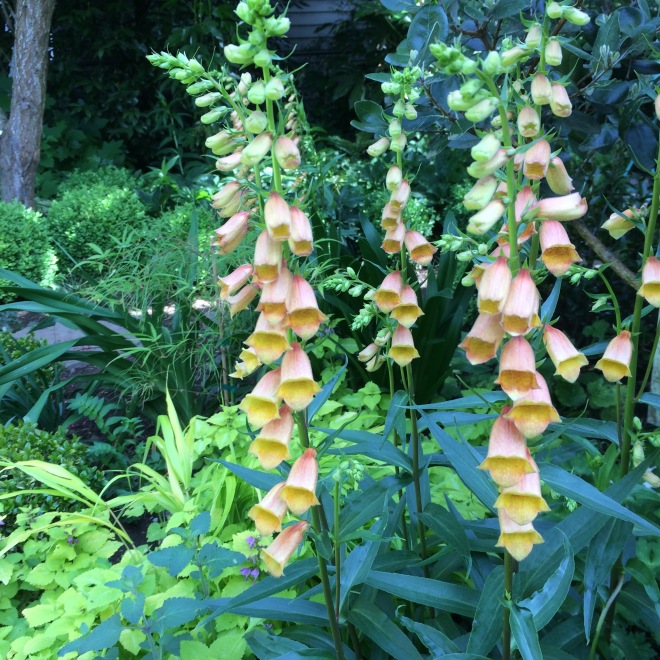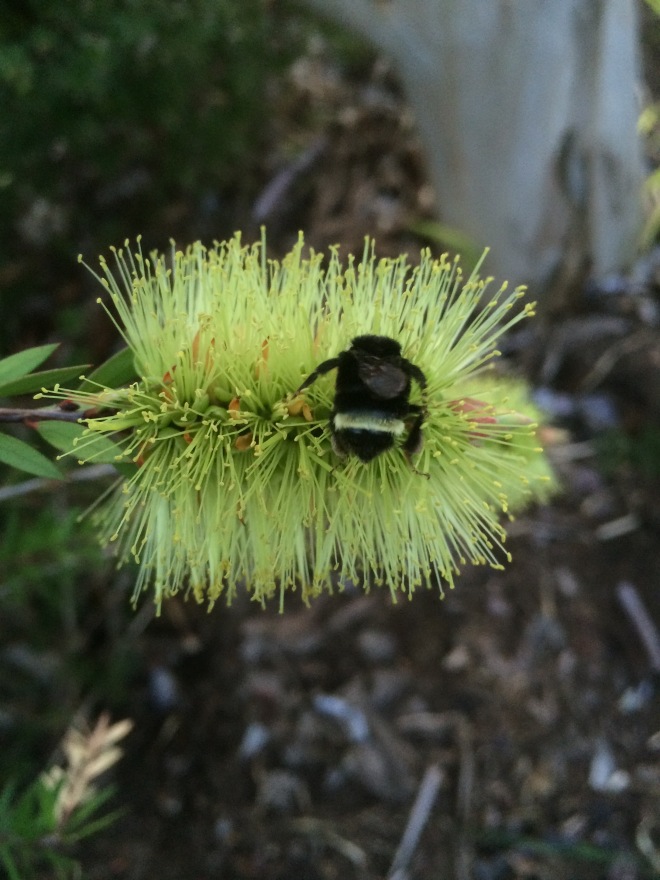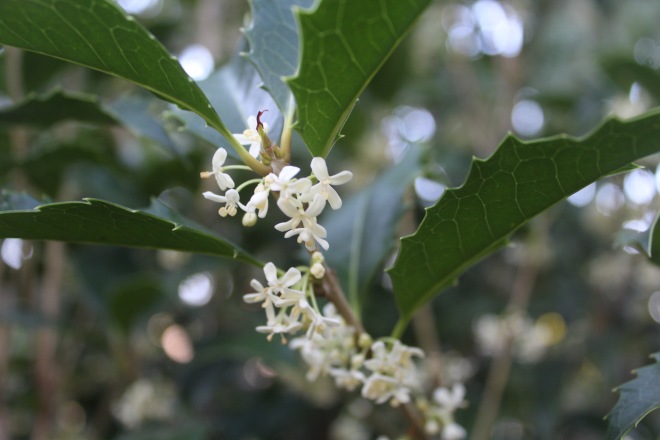I thought I would do a different blog this time. Instead of talking about the weather I decided to share some of the plants that I couldn’t be without. I’m exposed to thousands of plants because of my profession. Greg would agree that we are are total plant whores. I love, love, love finding a new plant and testing it out in my garden. In fact my garden isn’t the most aesthetically consistent. I try new plants all the time. What this entails is plunking the plant straight into my un-ammended soil and getting it established. I figure that most people don’t have the time or resources or continuity to make the soil perfect for individual plants. In my garden its sink or swim. Here are some plants that I think are perfectly adapted to our climate. Plants that I wouldn’t be without.

Agave bracteosa & Yucca linearifolia (Zn7a 0ºF)
Two plants that I find completely indispensable in my garden are these two easy to grow Mexicans. Agave bracteosa is perhaps one of the easiest Agaves to grow in Portland. Sometimes called the Octopus Agave I love its easy ways, and non-lethal leaves. This dear plant thrives in very well drained soil and forms a substantial plant quickly. Mine are located in the partial shade of a ‘Summer Chocolate’ Albizia. I love that it suckers freely and I can detach and move them all around my garden. On a scale of 1-10 I give this remarkably adaptable large succulent a 10. Just north of the Agave in this picture is another nearly flawless plant. Its the ultimately symmetrical, always erupting stunning Yucca linearifolia. Its a new comer from Mexico as well but it LOVES the gravely well drained soil of my parking strip. I have three in a group and they have been spotless through five winters as well as precipitous lows. Its a perfect plant. I love to stare directly into the rosette, its symmetry is dizzying and always makes me smile, smile, smile. This Yucca has become very rare on the market and all I can advise is buy it immediately if you see it offered. Immediately.

Jasminum offiinale ‘Affine’ (Zn7a 0ºF)
On a totally different note I thought I’d share my favorite vine. Sure, it doesn’t have 6″ wide flowers and smother itself in color but what it does offer I love. Jasminum officinale ‘Affine’ earns top marks in my garden for several reasons. First, its totally adapted to our climate, cold hardy, drought tolerant, and remarkably vigorous. This regal vine, also known as Poet’s Jasmine takes up vertical real estate but its well worth it. Heavily in all of June and then sporadically through summer it delights with clusters of 1″ wide crystal white flowers with the worlds most exquisite perfume. June wouldn’t be June without the wafting perfume of this elegant, romantic vine. In fall the pinnate leaves turn to tones of apricot and fawn before dropping. To 15’+ it deserves a place on every large pergola in western Oregon. New growth on this vigorous cultivar is a stunning deep burgundy. Light summer water and nearly any soil. Full sun to quite a bit of shade.

Fatsia japonica ‘Variegata’ (Zn7a 0ºF)
A good friend of mine and the owner of a large nursery in California once told me that “foliage is king”. I have to whole heartedly agree. Fatsia is a wonderful plant to grow in our climate. Its bold and undemanding and suffers the rigors of dry shade with nearly bionic aplomb. My favorite is plain old ‘Variegata’. Its huge evergreen leaves are irreverently edged in white. Perhaps its most remarkable trick is to have huge candelabras of variegated, pure white orbicular flowers in autumn. To 6′ tall and half again as wide. We will have an enormous amount of this exact cultivar for sale in the spring. Deer shun it even as it imparts the toughest display of tropical foliage. Easy and hardy.

Digitalis x ‘Honey Trumpet’ (Zn5b -15ºF)
This is pretty self indulgent but I have to plug this remarkable hybrid Digitalis that emerged at our nursery. The product of a tetraploid yellow foxglove and a semi-shrubby species what you get is a sterile but blooming machine. Tubular amber imbued trumpets line tall spikes from May to October. Cut back the spent scapes on this long lived perennial and more will arise. It thrives in full sun and many types of soil. Its Iberian heritage means that it thrives despite our dust dry summers. To 28″ tall and producing multiple scapes. Perfect in a perennial border or adaptable to xeric realms. Regular water in full sun sends this foxglove soaring

Arctostaphylos x ‘White Lanterns’ (Zn7a 0ºF)
Manzanita. Everyone in our region should have at least one. They are the ultimate shrubs of the west. And WOW what they offer is a four season display of bark, foliage, and flowers. I’ve grown a shitload of Arctostaphylos and I can tell you that some are great garden plants but many species are determined to be feral. This smaller growing shrub is a perfect plant as far as I am concerned. Small, dapper leaves- held perpendicular to the sun to avoid moisture loss- are a fine textured bonanza. To just 3′ x 3′ it finds a home in the smallest gardens. And holy smokes it offers smooth cinnamon bark with age and a reliable display of profuse white flowers in late winter. As with all in this wild genus it thrives on utter neglect. ‘White Lanterns’ has been a stellar performer at the OSU North Willamette Experimental Station. And I completely agree. Its a fantastic, adaptable, disease free, cold hardy cultivar.

Callistemon viridiflorus (Zn7b 5ºF)
This groovy bottlebrush should be everywhere. Diamond shaped forest green leaves line the corky white stems. In May-July it erupts in delicious chartreuse brushes. This 7’x 5′ evergreen shrub loves full sun in our climate. Its a boon for pollinators as well as hummingbirds. A native of Tasmania it actually needs cold for a good flower set- and our region is ideal. In its native haunts it dutifully follows cold air drainages in canyons to achieve its perfect adaptation. We have been experimenting with this species and have selected three distinct varietals. ‘Shamrock’ is a tidy compact but decidedly upright cultivar. ‘Xera Compact’ is exactly that but with an unmatched profusion of bloom. ‘Xera Hedgehog’ is but 2′ x 2′ with a copious display of chartreuse brushes. It could find a perfect home in the sun drenched tough life of parking lot islands. Light summer water.

Osmanthus x fortunei ‘San Jose’ (Zn7b 5ºF)
I have a thing for fragrance in my garden and when you pair that with a handsome glossy evergreen shrub…woo, I’m there. This hybrid Tea Olive is just the ticket. In time it achieves tree like status but I prefer it as a large shrub with leaves from the ground to the top. In Oct/Nov. it produces small parchment colored flowers with the penetrating perfume of apricot and freesia. Mine is 25′ from my back porch but when the weak but warm autumn sun blazes it sends the perfume on a roaming path to my house. Easily grown in almost any soil, once up and going it is completely tolerant of our summer drought. Whatever you do, don’t forget autumn where some of the most sophisticated plants shine.

Grevillea miqueliana (Zn7b 5ºF)
This Australian shrub was a pure experiment and its turned into a winner. Round Leaf Grevillea is the not so original common name of this large shrub which is less than common. Undulating round suede textured leaves are dapper year round. This large, dense evergreen shrub is fantastic in bloom from January to July. Pendant sunset colored flowers decorate the tips and delight gardeners as well as hummingbirds. Best with exceptional drainage such as a slope, but one of the most tolerant of clay soils. Grevilleas can be a challenge to grow but with careful siting and deliberate neglect they are more than rewarding. Last winter we experienced a small freezing rain event. My Grevilleas were in full bloom. Peering out the window I watched as a hummer perched on a stem waiting patiently for the ice encased nectar rich flowers to thaw. A natural bird feeder and an elegant shrub.
Remember every season
We are so gifted in this climate to be able to grow a nearly endless palette of plants. I love testing new plants and I’ve come to respect these as reliable and dynamic additions to the garden. Gardens are not static, we begin them and then follow where they go. This group of plants I encourage you to try, include, enjoy in your own space. I’ll continue to try new and old plants to discern their adaptability. Trial and error is the essence of growing plants. All of these plants we grow at Xera. Have a good early October, one of the nicest times of the year in PDX.
